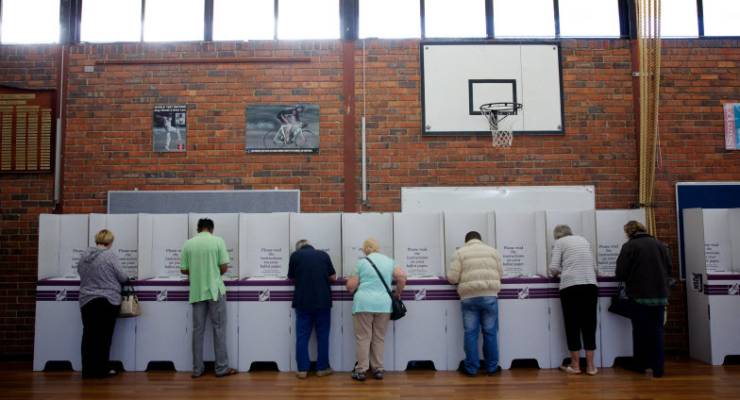
After Kerryn Phelps’ victory in Wentworth it seemed like every Tom, Dick and Jane saw an opening to be the next candidate to restore faith in democracy. But what does it actually take to run for federal parliament, let alone be in with a chance to win?
What are the basics?
Those seeking election have until April 23 to nominate and the Australian Electoral Commission is the best starting block for any aspiring candidate. Someone wishing to nominate for the Senate or the House of Representatives must be 18 or over, an Australian citizen, and be entitled to vote.
Being entitled to vote requires being validly enrolled on the electoral roll at your current address. Other exclusions to nominating are if you are a member of a state or territory parliament — unless you resign prior to nomination.
If you pass go on these provisions then you need to check for any disqualification landmines. You can be disqualified from voting — and running as a candidate — if you are in prison serving a sentence of three years or more, of unsound mind, or convicted of treason or treachery and have not been pardoned.
How much does it cost?
Thanks to the section 44 crisis of the 45th parliament this election will be the first one where the qualification checklist is compulsory for all candidates. Bear in mind, taking “reasonable steps” to ensure you aren’t a citizen of any other country can be very costly. For former Labor senator Sam Dastyari, renouncing his Iranian citizenship was a “difficult, expensive, lengthy and precarious” involving two teams of lawyers in both Australia and Iran and $25,000 in legal fees.
But the electoral expenses don’t end there. The House of Representatives nomination deposit has doubled for the 2019 federal poll. All candidates must pay a $2000 deposit to the Australian Electoral Commission with their nomination which must be in cash, or a cheque drawn by a bank or other financial institution (no personal cheques). The deposits are only returned on three conditions: if a candidate is elected, gains more than 4% of the total first preference votes, or is in a group of Senate candidates which polls at least 4% of the total first preference votes.
At the last federal election in 2016 a typical independent candidate secured about 2% of the first-preference vote — half of what was needed to get back their deposit. Of the 108 independents contesting lower house seats only two were successful — Andrew Wilkie and Cathy McGowan. Their victory is largely due to the trend of crossbenchers cementing themselves in as a community candidate — an antidote to rising political mistrust among voters.
What other support is required?
It’s not enough to just have the money to nominate — candidates also need a big backing of supporters and a kitty for campaign advertising.
Aspiring politicians need to collect 100 signatures of support along with their nomination form. Independents with a better chance of beating the odds also need to recruit an army of volunteers to assist with everything from doorknocking, to phone banking (calling to spruik a candidate or voter canvass concerns), postering and handing out “how to vote” cards on election day.
How do the parties do it?
Those choosing not to go it alone in their bid for power and instead hitch themselves to a political party, or form their own party, face different hurdles.
A Labor spokesperson said their successful candidates are pre-selected through their local branches. “Every member is welcome to put their name forward for preselection, which are conducted through democratic ballots of the local membership”. In terms of the type of people they look for candidates “should reflect their community” but Labor is also working towards meeting their 50% target by 2020 of women in their caucus, achieved through affirmative action rules.
Similarly, the Liberal party require all candidates to be a member of the party to contest an election. But as we know from recent preselections, like Warren Mundine, the ink on their membership doesn’t need to be dry for them to be picked. A Liberal party spokesperson said that their candidates “come from many different backgrounds and experience”, with those standing for the party in the state election hailing from professional backgrounds that included nursing, teaching, policing, and small business.
For both the major parties, preselection decisions can be messy. Labor is well known for vicious factional warfare, most recently in resolving ACT seats, which can be described as a sort of tit-for-tat division of positions. Meanwhile, the Liberal rank and file are meant to have their say but captains picks of candidates have been common, and women face preselection panels that have been described as male, pale and stale. Even having the backing of a current or former politician doesn’t mean someone is a shoo-in.
Australians are often told if they don’t like how politics is going they should do something about it but it seems you need a great deal of financial and social capital to be a successful candidate and be able change the system from within.







Crikey is committed to hosting lively discussions. Help us keep the conversation useful, interesting and welcoming. We aim to publish comments quickly in the interest of promoting robust conversation, but we’re a small team and we deploy filters to protect against legal risk. Occasionally your comment may be held up while we review, but we’re working as fast as we can to keep the conversation rolling.
The Crikey comment section is members-only content. Please subscribe to leave a comment.
The Crikey comment section is members-only content. Please login to leave a comment.